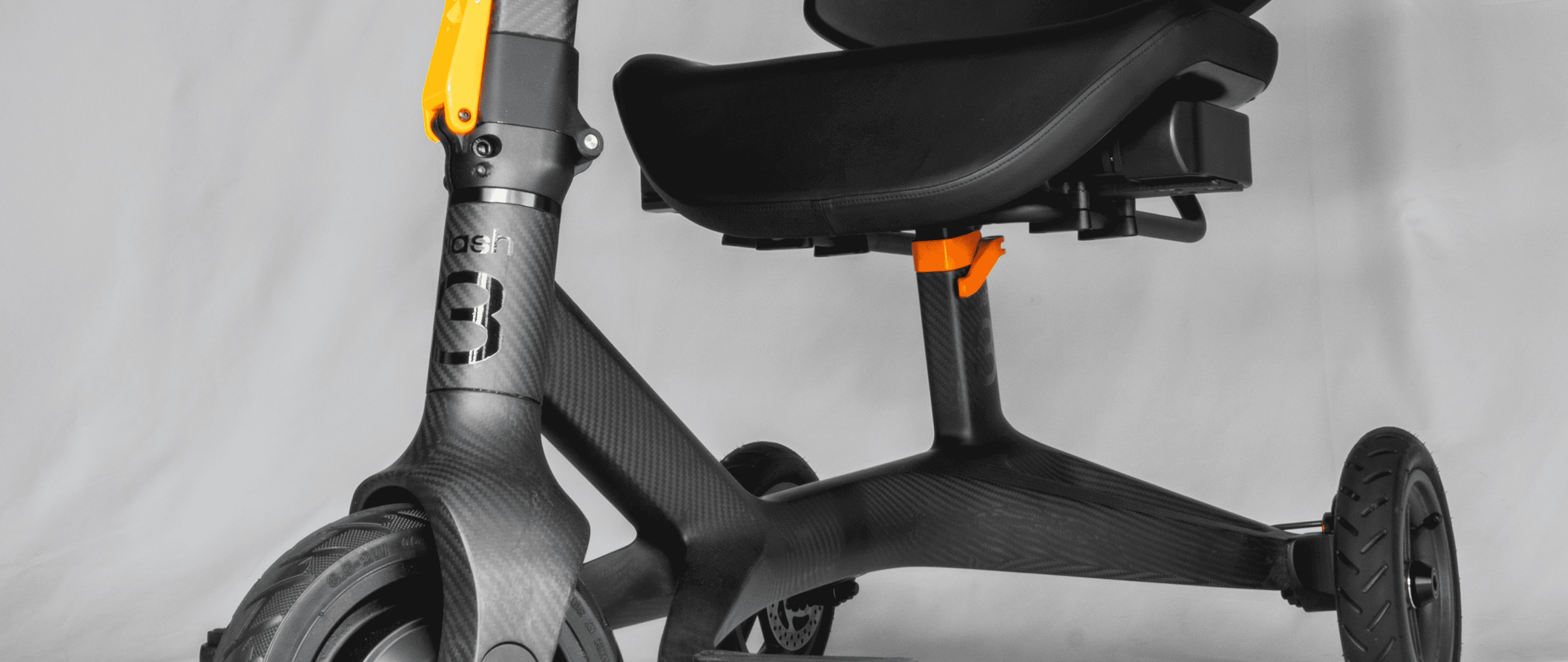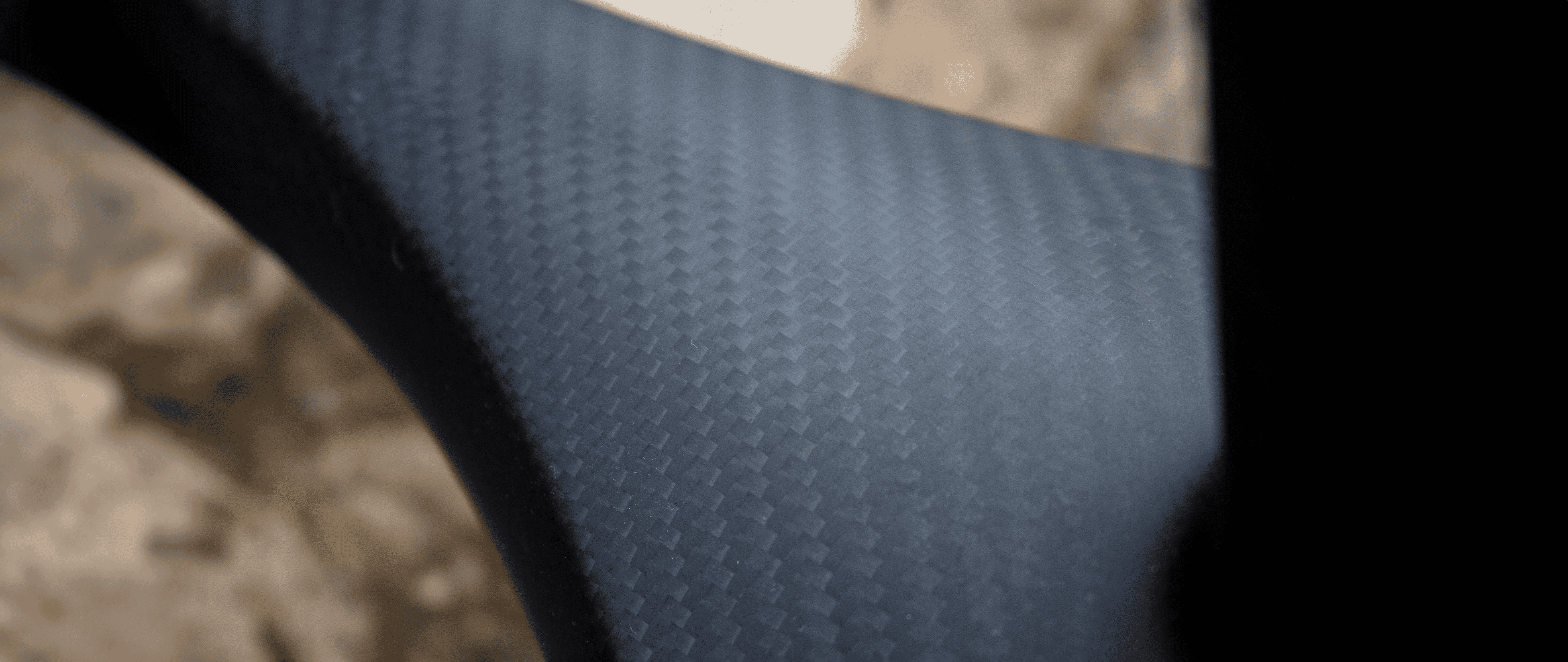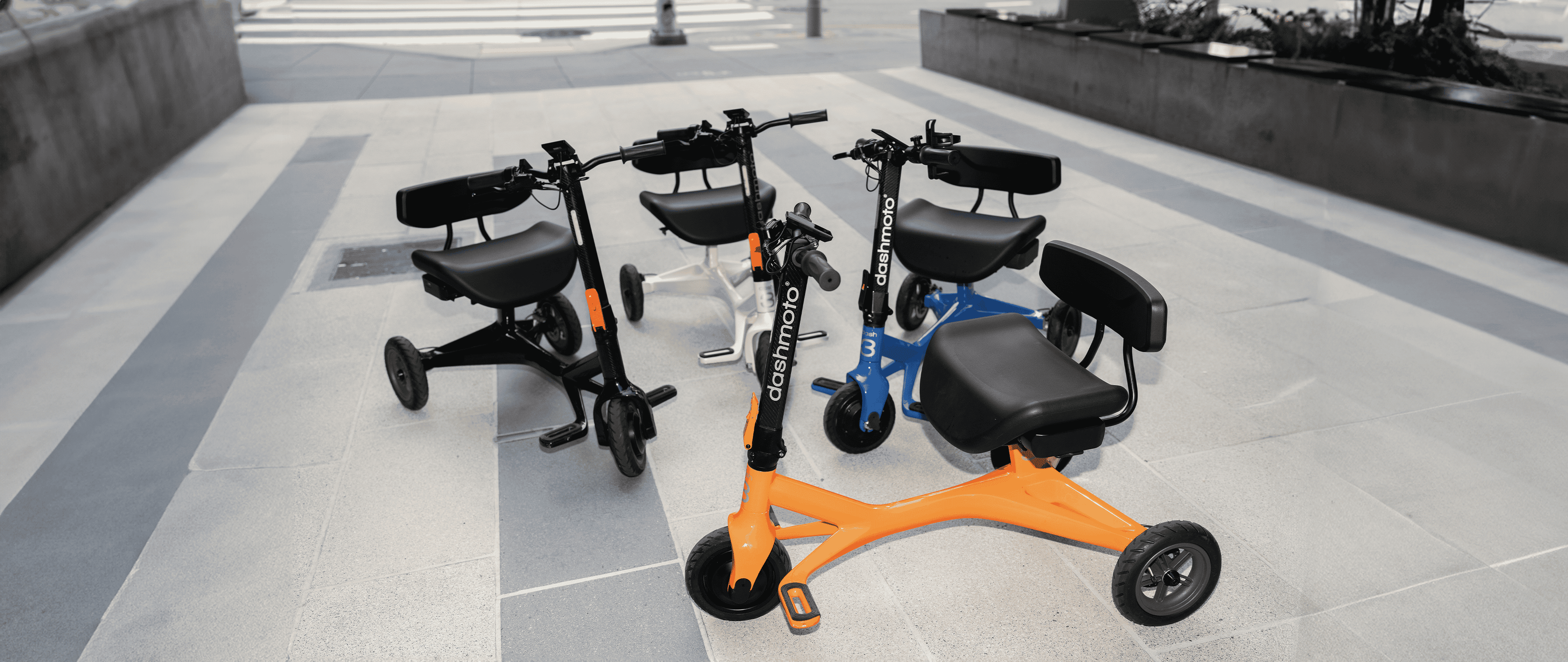Carbon Fiber Vs Aluminum: Why Material Matters in Electric Mobility Scooters

When it comes to electric scooters, the frame material isn’t just a detail. It defines the ride. From how stable it feels to how easily it folds, material choice directly affects performance, comfort, and long-term durability. So let’s talk about it. Specifically, carbon fiber vs aluminum for electric scooters.
This isn’t just a science lesson, it’s the difference between a ride that blends into your day and one that transforms it. The dash 3 uses a patent-pending, single-piece carbon fiber frame. There’s a reason for that. Actually, there are several.
Why carbon fiber electric scooters outperform aluminum ones
Scooters aren’t just about speed. They’re about how they feel under you, how easy they are to carry, and how well they hold up over time. That’s where material choice makes all the difference.
Carbon fiber brings unmatched strength and ultra-low weight
Carbon fiber electric scooters change the game from the first push of the throttle. The material is incredibly strong for how little it weighs. The dash 3 frame, for example, is built from T700 carbon fiber, the same grade trusted in aerospace and motorsports. This isn’t cosmetic carbon wrap. It’s the real thing, molded into a single-piece structure that’s as stunning as it is functional.
In contrast, aluminum scooters tend to be heavier. Sure, aluminum is technically lightweight compared to steel, but it's no match for carbon fiber. A heavier frame translates into slower acceleration, harder transport, and less range per battery charge.
Carbon fiber not only sheds weight, it holds shape. It resists warping and fatigue over time. And because the dash 3's carbon fiber frame is built in one continuous piece, there are fewer joints or welds that can weaken or loosen. The result? A smoother, more precise ride. One that’s lighter in your hand and stronger under your feet.
Ride comfort starts with frequency absorption
A smoother ride isn’t just about suspension or tires. The frame material itself plays a huge role in how the scooter handles bumps, cracks, and rough patches.
Carbon fiber absorbs vibrations, aluminum does not
Material isn't just about strength. It’s about how a scooter feels while moving. This is where carbon fiber outclasses aluminum by a mile. Carbon naturally absorbs high-frequency vibrations caused by bumpy roads, uneven sidewalks, or rough terrain. That means less shaking through your hands and more control where it counts.
Aluminum, on the other hand, tends to transmit those vibrations straight to the rider. That’s especially noticeable when riding over cracks, curbs, or urban terrain. It can turn a quick commute into a jarring experience.
The dash 3 takes this a step further. Paired with an ergonomic seat made from flexible polyurethane foam and fiberglass backing, the ride feels stable, supported, and comfortable, even over longer distances. It's not just about comfort either. Reducing vibration also means less fatigue for your wrists, arms, and lower back. You stay more alert and more confident throughout your ride.

Design precision only carbon fiber can deliver
The way a scooter handles turns, folds for transport, or fits in a trunk comes down to how it’s built. Carbon fiber lets designers create shapes and functions aluminum just can’t replicate.
Tight turns and smooth curves are easier with carbon
Let’s talk about turning radius. The dash 3 has a stunningly tight 2.5-foot turning radius, meaning you can make a full U-turn in the narrowest hallway or elevator. That precision doesn’t happen by accident. Carbon fiber gives engineers the flexibility to mold curves and angles exactly where they’re needed, creating a frame that works with the rider instead of against them.
Carbon fiber also allows for sleek, aerodynamic shaping without sacrificing strength. That’s how the dash 3 manages to look like a futuristic ride while still folding down in seconds and fitting into your car trunk or closet.
It’s not just about the look. The single-piece carbon fiber design eliminates unnecessary bulk, hinges, or screws that would be needed in an aluminum frame. Fewer parts mean fewer failure points. And fewer compromises.
Portability matters and carbon makes it easier
Scooters are meant to move with you, not weigh you down. Especially when you’re transitioning from a sidewalk to a bus, or up a flight of stairs.
Carbon fiber makes the dash 3 incredibly easy to lift
Mobility means freedom. But only if your ride is light enough to take with you. Carbon fiber allows the dash 3 to stay under 40 lbs with the battery removed. That’s unheard of for a scooter with this much performance built in.
Aluminum scooters, even with comparable battery systems, often weigh significantly more. That added bulk makes it harder to lift, store, or travel with your scooter. And if you’re dealing with an injury or mobility limitation, every extra pound makes a difference.
Whether you're commuting by train, fitting it into a taxi trunk, or carrying it up the steps to your apartment, weight becomes a major factor. The dash 3 keeps that load light without sacrificing durability. That’s the beauty of carbon fiber.
Power meets efficiency in a carbon fiber frame
A high-performance scooter is only as good as the way it transfers power. And carbon fiber gives you the most direct, responsive ride possible.
Carbon keeps the ride efficient, fast, and controlled
Carbon fiber doesn’t just help with feel and portability. It unlocks better performance, too. The dash 3’s powerful 500 watt motor and three drive modes make it possible to overtake bikes on city streets or climb hills with ease. That’s not just power, that’s purpose.
Because the frame is so light and rigid, more of the motor’s power goes into motion rather than being lost in flex or frame wobble. That means faster acceleration, smoother cornering, and better battery efficiency.
The dash 3 also includes a negative camber frame design, dual hydraulic brakes, and an intuitive throttle that delivers precise, linear power. Combine that with the electronic hill hold feature, and you've got a scooter that’s not just fast, it's fully in your control.
Carbon fiber feels like the future of mobility
This isn’t just about materials. It’s about everything they enable. Performance. Comfort. Freedom. The dash 3 doesn’t just use carbon fiber, it was built around it.
From aerospace to sidewalks, carbon fiber leads the way
There’s a reason high-performance industries like aerospace, Formula 1, and premium cycling choose carbon fiber. It’s the only material that combines unmatched strength, ultra-light weight, and frequency damping into one package. For electric scooters, that means a ride that feels less like a compromise and more like an extension of your movement.
It’s not just a technical decision, it’s a lifestyle one. The dash 3 was designed for those who don’t just want to get there, they want to enjoy every moment of the ride. For those who need something dependable and elegant. Portable and powerful. Comfortable and exhilarating.
Want to see what the future of mobility looks like in motion? Watch the dash 3 in action on our YouTube channel.
Related posts

Why Carbon Fiber Is a Game-Changer for Frame Designs
Discover why carbon fiber is revolutionizing frame design. Learn how dashmoto®’s dash 3 benefits from a lightweight, durable, and stylish frame.